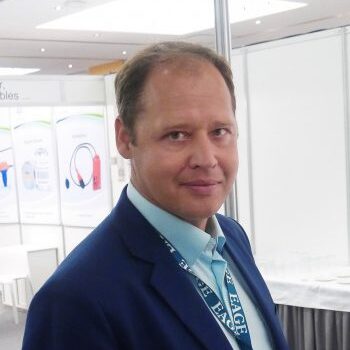
Yuriy Davydenko
Executive Director
Siberian School of Geosciences INRTU
Born in 1971 in Irkutsk, in 2000 he received a diploma of higher education in the field of "Geology and Mineral Exploration" (awarded a Master's degree in Technology and Engineering, Irkutsk State Technical University). In 2005, he received a degree in technical sciences, having defended his dissertation on: "Development of the hardware and software complex of the differential-normalized method of electrical exploration". From 1996 to 2011, he worked for SGRPC LLC and participated in land and marine geophysical expeditions; for example, in the Arctic (Kara and Barents Seas), Cuba, Kazakhstan, the European part of Russia, the Far East and Siberia; From 2012 to the present, he has been working at Helios LLC as General Director, as well as associate professor and Executive Director of the Siberian School of Geosciences IRNTU. Research interests: development of electromagnetic sensing technologies, three-dimensional modeling and inversion of geophysical data, complex analysis and interpretation. He has co-authored 8 patents and more than 20 international publications.
The experience of studying porphyry systems of Kazakhstan by geophysical methods.
The analysis of the results of surveys carried out by Helios in Kazakhstan in 2018 and 2020 in order to search for copper-porphyry systems is presented. At the search stage, in order to optimize drilling operations, the following tasks are solved: identification of new ore bodies and delineation of already known ore occurrences; identification of the distribution of mineralization; identification of the deep root zone of copper-porphyry mineralization; identification of blind ore bodies that do not have access to the day surface; identification of the zone of oxidized ores and contacts of zones of oxidized and sulfide mineralization. These tasks are successfully solved using the technology of electromagnetic sounding and induced polarization (EMS-IP) in combination with unmanned geophysical technologies. As a result of the constructed three-dimensional geoelectric model, porphyry-type objects are distinguished by anomalies of conductivity and polarizability. While three-dimensional modeling of UAV-magnetometry data with the restoration of the magnetization vector makes it possible to localize sulfide bodies with a high iron content.


